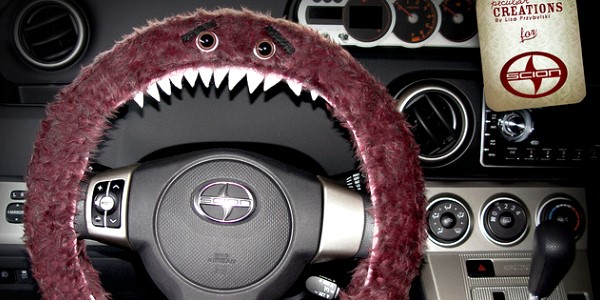Electric feel
EPAS this, electric motors that, you can barely step foot into your local iPub without coming across a motoring reference to the changeable world of steering assistance. Well, I can’t anyway, ‘cos I’m a bit geeky like that.
There has been a gradual shift of car manufacturers’ tendencies from using hydraulic to electric assistance to help those not built like the Governor of California [runs off to laugh AGAIN] to turn the steering wheel. The usual quoted benefit is something like a 3% increase in economy by preventing the engine having to drive a hydraulic pump, not to mention a theoretical reduction in engine bay clutter by removing an entire fluid-based system. The downsides are next to nothing for most buyers, however the complaint thrown at this innovation from us typical tactility troublemakers is that it robs the system of crucial steering feel.
Now before you scamper off into the distance, this is not a rant about electric steering feedback, as the technology is continually improving and often claims to be even better than hydraulics, helped in part by being able to switch off completely at speed. No, this is a rant about why ‘normal folk’ claim that steering feel is unimportant and irrelevant in a modern car - ie. an object whose primary function is reliable, safe transport and not as a plaything.
The problem can be summarised in one real-world scenario around ten minutes from where I live. It is a particular 90-degree corner where two dual carriageways meet, with the left lane being a direct filter from one road to the other. The outer lane feeds traffic direct from the roundabout itself. The council, in their infinite wisdom, have created this road junction using two different road surfaces. The first is that grippy white/yellow stuff, and the second is normal black tarmac.
Where would be the worst place for one surface to change into the other? That’s correct, right smack bang (and very much wallop) on this bend, not all that far after the apex. It has been a subject of much interest to me over the years, as this travesty is encountered on the route back from some of the best driving roads in the UK. As such, I have had the pleasure of experiencing the corner of doom in an assortment of vehicles.
In the dry whilst piloting a Mk1 VW Scirocco on questionably hard old tyres, a spirited tip into the bend led to the coupe wagging its handsome rump from the change onwards, a sudden yet amusing breakaway as the coefficient of friction drops away faster than James Cordon’s popularity.
Similarly in an old BMW, you could still feel the difference betweeen the two surfaces through the steering wheel in the dry. It was not a huge amount, but definitely enough to make a mental note about what was going on underneath those front wheels as your line around the corner gradually washed out.
For the benchmark test, when driven in Lotus’s finest glued aluminium conglomerate the telltale surface feedback is so intense that you’d swear Matt Bellamy was cowering under the bonnet.
So, what happens around this dry bend in many a modern car or 4×4, with it’s dulled-down responses and untroubled steering wheel? Nothing. Zero. Zilch. Regardless of how the steering is assisted, you’d be hard pushed to tell anything was going on at all.
I’m telling you all this because when it is raining, this junction becomes really rather dangerous. If you had recently started commuting the route in summer and drove at a similar speed every day, all it would take would be light summer rain and you’d round the corner to find that you had automatically filtered into the outside lane, regardless of who else was occupying it. If it wasn’t for the change of colour (that no doubt goes completely unnoticed to many), it would seem that your car had suddenly decided it was bored of all this and maybe the pesky fuse had blown for the ‘road sticking.’
That, my dear chums, is why people don’t invite me to dinner parties in case someone says that their Toureg is safer than a ‘driver’s car’ as it ‘has more grip’. Because I’ll spit out my lamb chop.
Words: James Winstanley

Reply